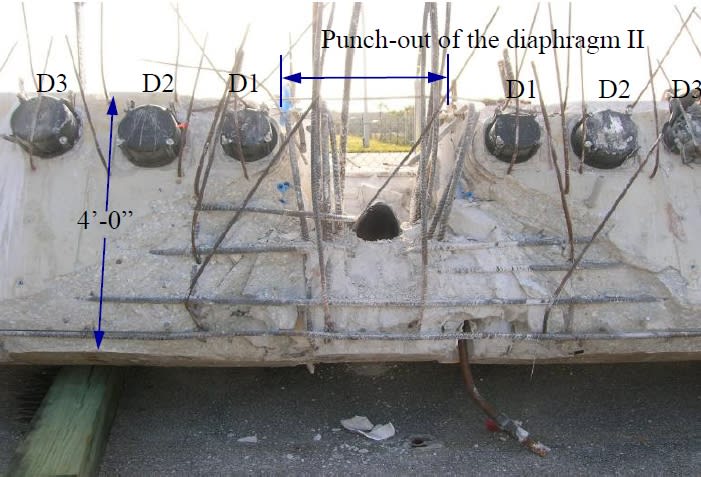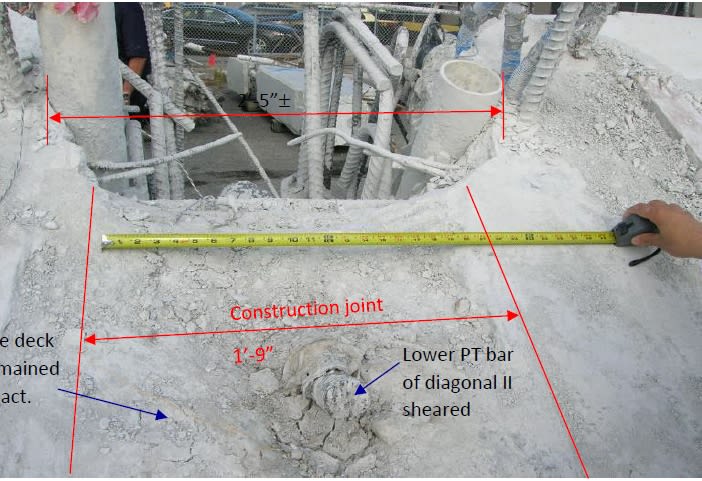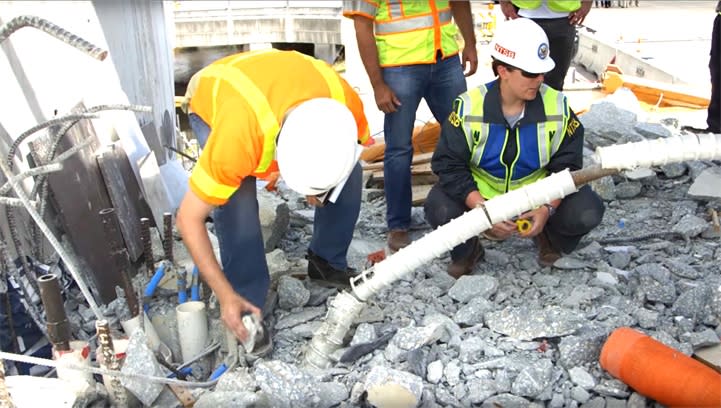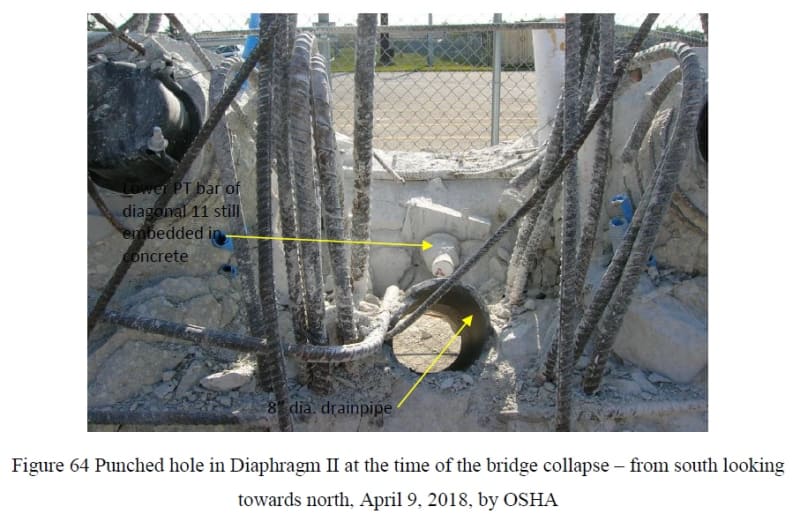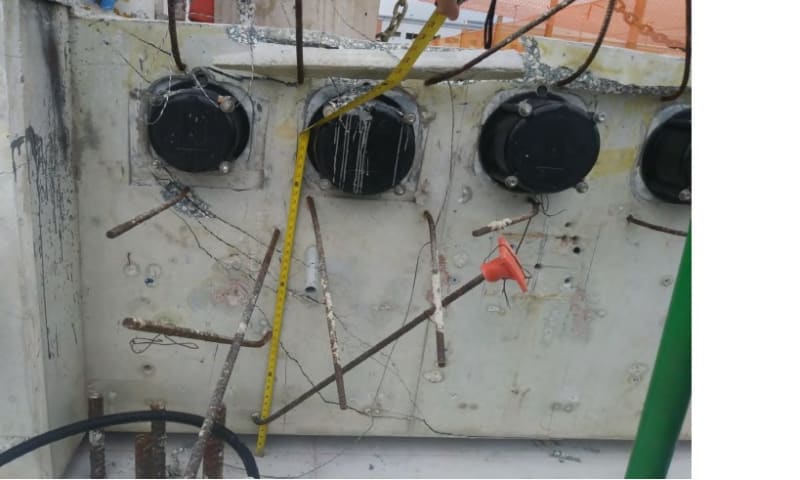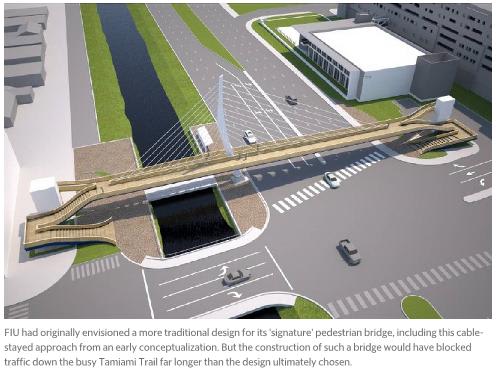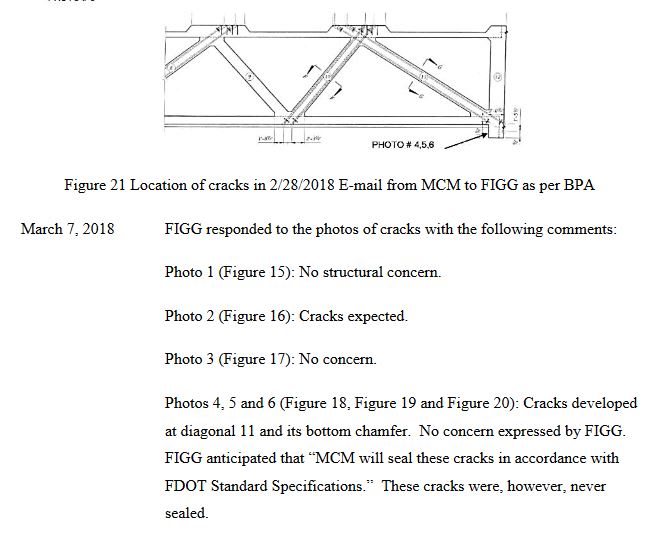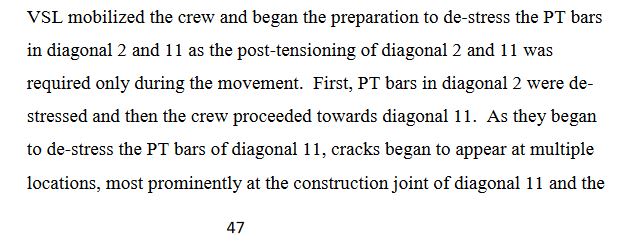When you look at
Figg's portfolio the thing that stands out is the immense scale of their projects. I think what did them in is they really didn't understand how to downsize their engineering, in the way that a clockmaker skilled in making grandfather clocks would be stymied trying to make a watch mechanism. Us oldtimers remember what a disaster it was when the American automakers first tried to make smaller cars - they were clueless, for years and years and years.
I don't think Figg actively sought out this contract. The owner of MCM is an FIU grad, as is 40% of their staff. My bet is that FIU approached MCM and told them they had the deal, but on the condition they had to get Figg aboard (this was a first-time MCM-Figg collaboration) so they could design one of the cool cable-stayed bridges that was at the top of the FIU wish list.
But FIU also wanted the bridge built with ABC (to enhance their engineering school brand) so the result was a compromise of the worst kind, a faux cable-stayed bridge. That would explain why Figg refused to change the design when
Tom Andres asked if they had considered building "a real cable-stayed bridge" instead of a "fake one."
In the
NBC Interactive Timeline - dated 10:55 Am March 25, 2016 - Andres sent an email to a Figg engineer (Jonathan Van Hook) and asked
"Just a thought. Have you guys considered a real cable stay, constructed about a pivot pier in balanced cantilever alongside the road way where the truss element and canopy were not a main load carrying members and then the completed structure rotated into place with SPMT's?
That would (sort of) satisfy the ABC requirement, but Figg apparently refused.
If you haven't heard the entire story of the bridge's history, it's contained in this immense
Miami Herald article from 2018-06-14 in the section titled
Bridge Beginnings.

